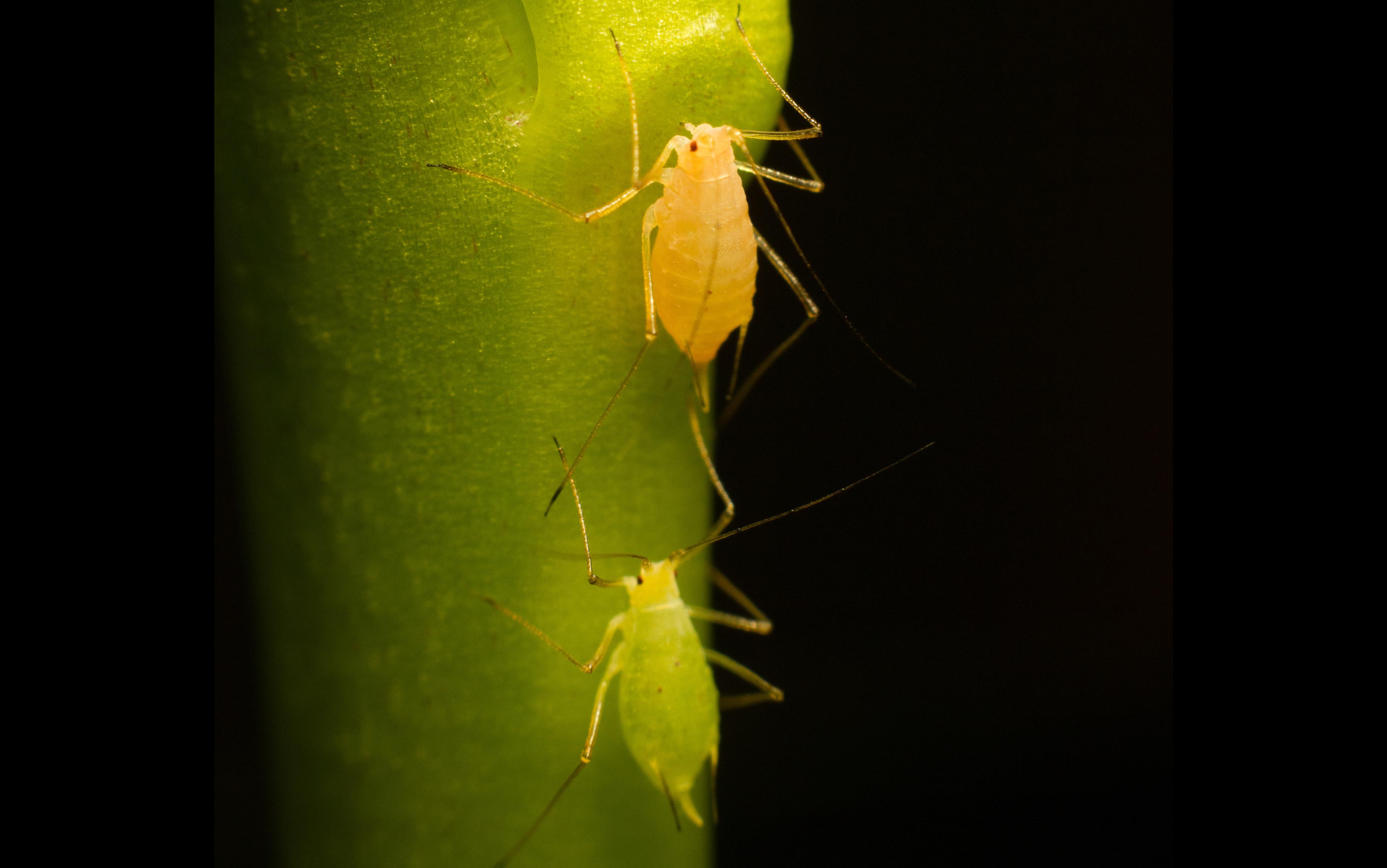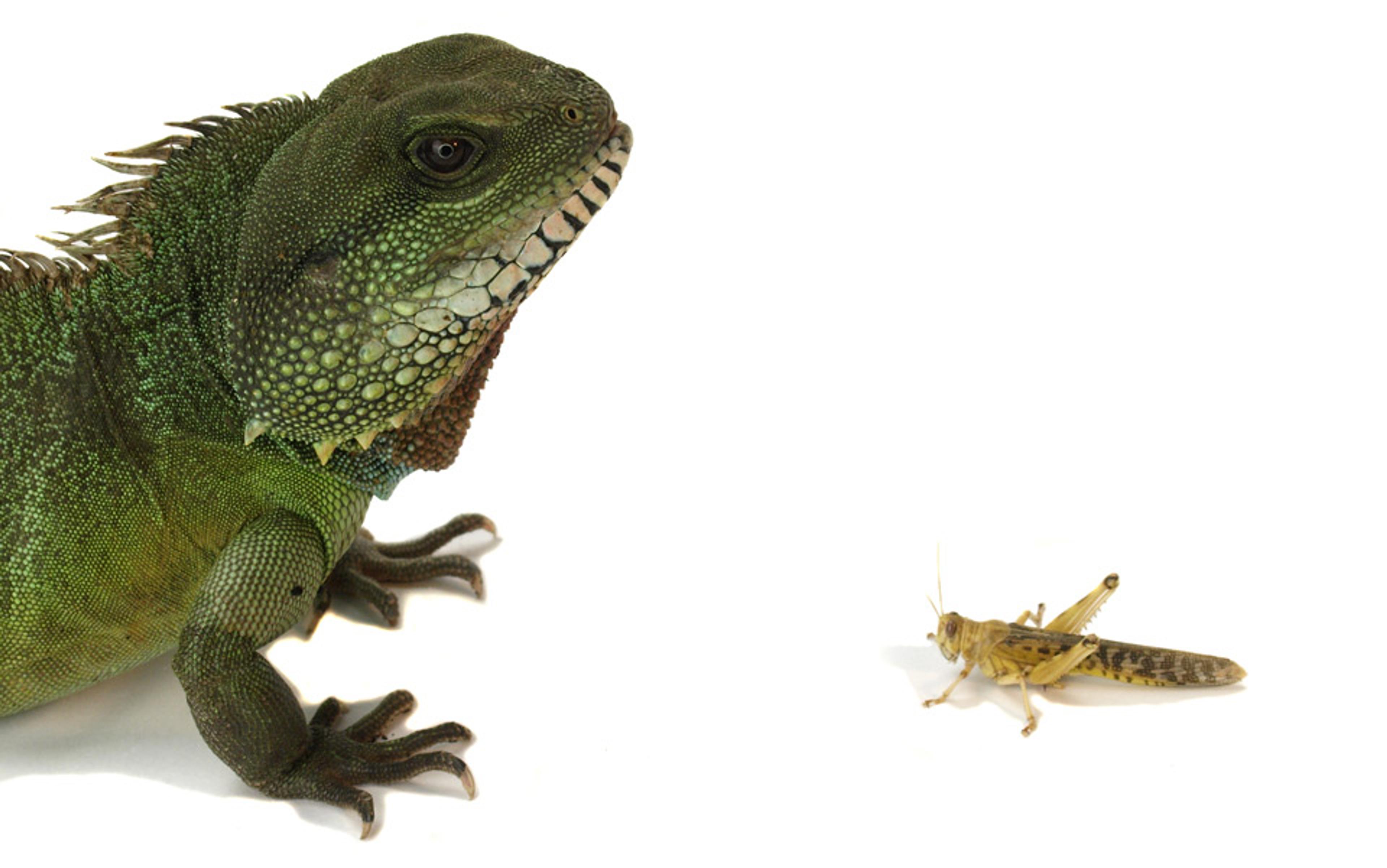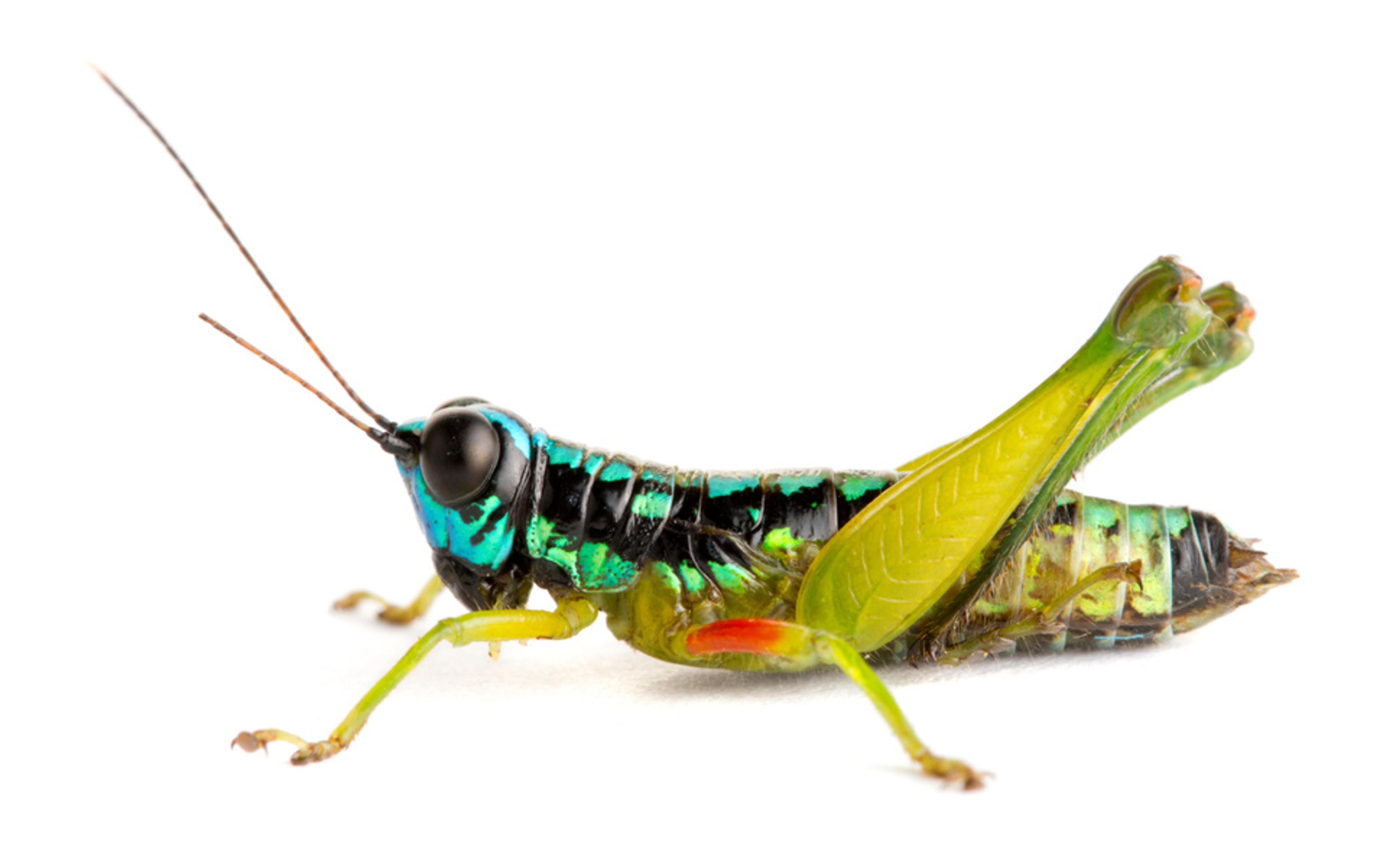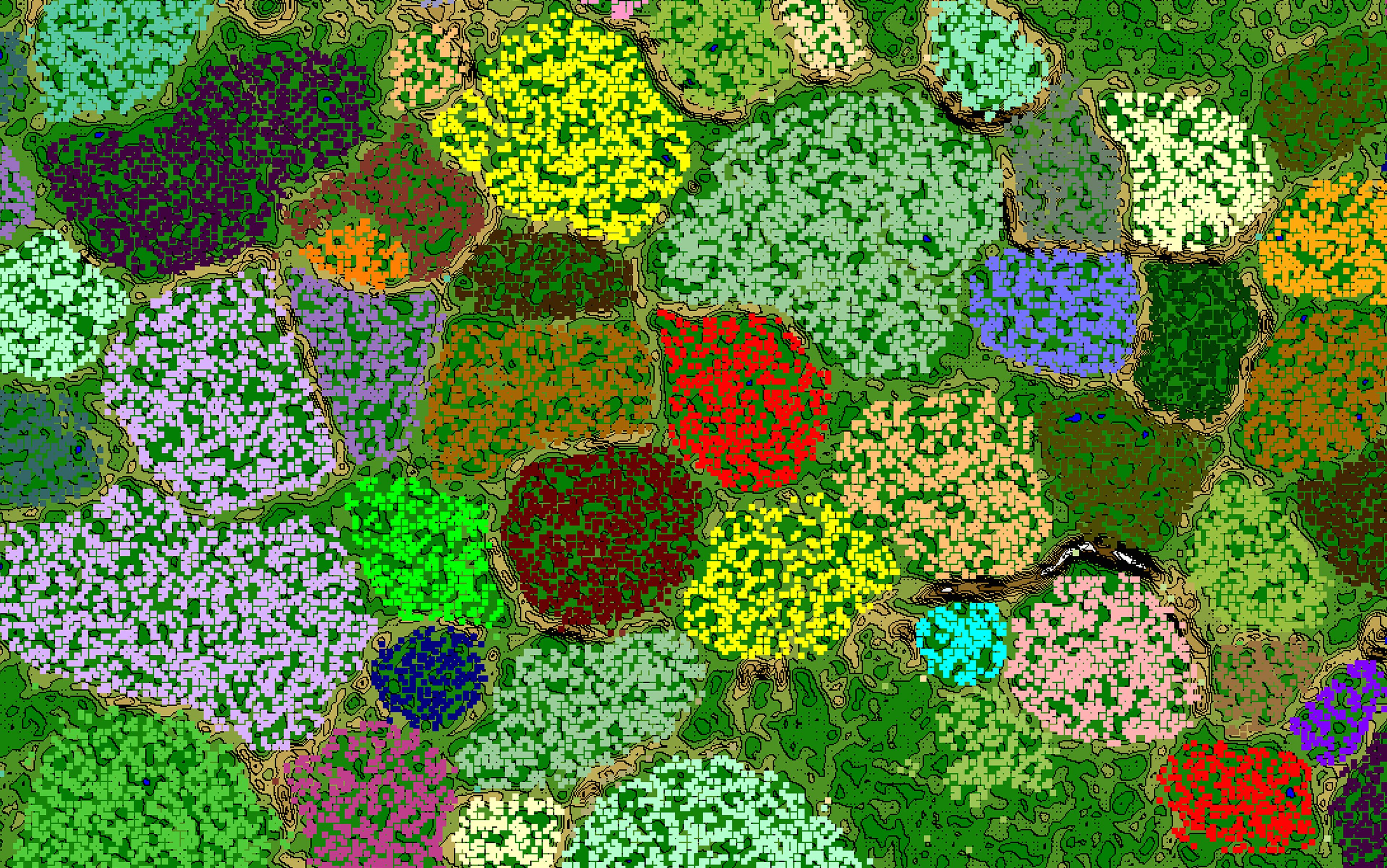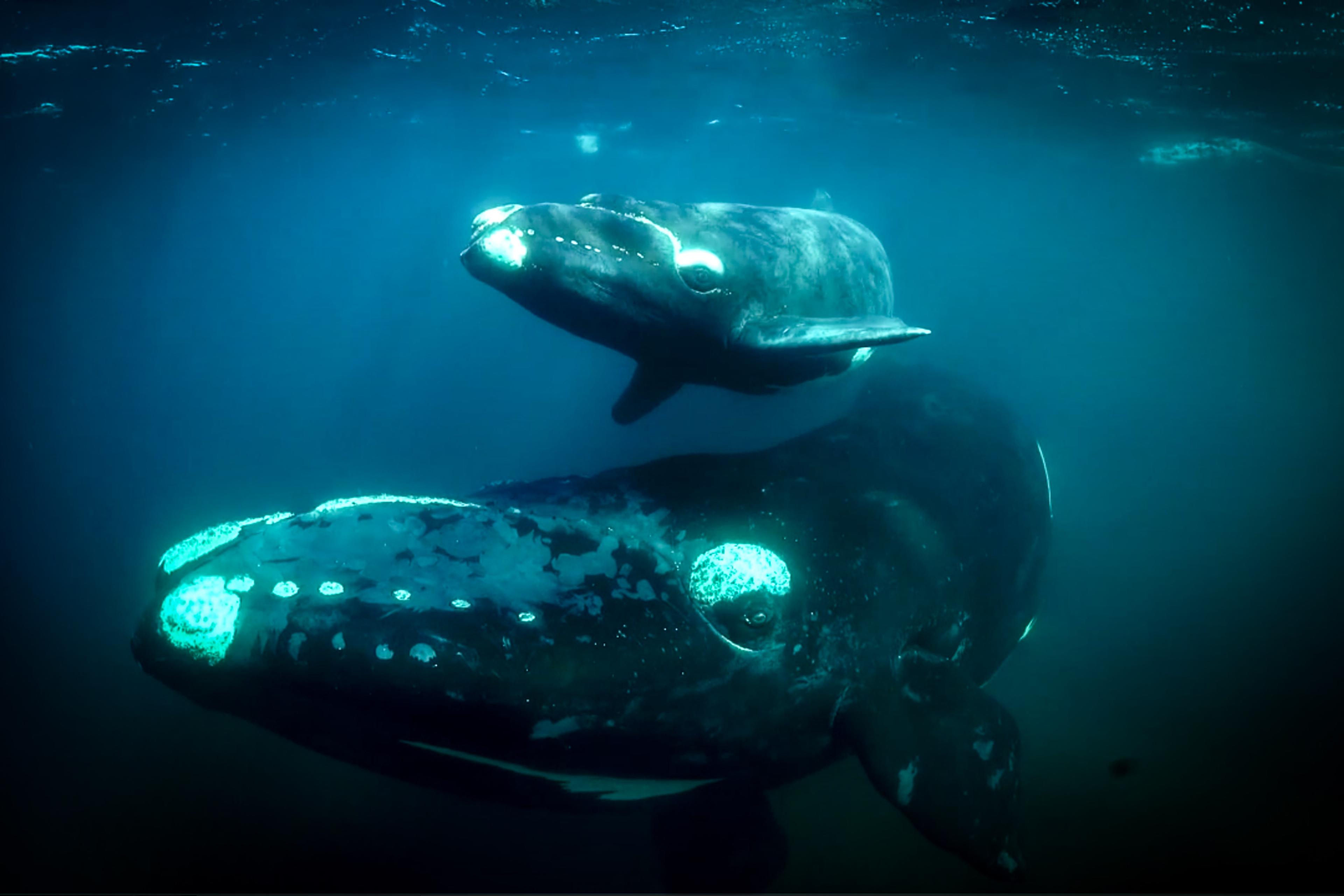Fay-Wei Li stepped out of his car and looked around. There was not much to see aside from an old wooden fence and a soggy ditch strewn with roadside detritus. Could this really be the spot? A biologist at Duke University, Li had driven seven hours from North Carolina to these exact coordinates in Florida in search of hornworts: the living descendants of some of the very first land plants.
An hour’s search yielded nothing except an uneasy feeling about trespassing on nearby residences. Before giving up, Li checked one more spot. There, in that ditch full of trash, he found them. Most people would probably mistake the spring-green bristles for blades of grass, but Li recognised the hornworts right away. He plunged his hands into the soil, scooped up the rootless plants, and packed them in a plastic cooler. A humble package of earth and herbage, but one that would rewrite a chapter in the evolutionary history of plants. Long ago, hornworts did something plants are not supposed to do: they breached the species barrier, trading DNA with an entirely different kind of plant – a fern.
Between 300 and 130 million years ago, as trees and flowering plants grew to dominate the globe, the sun-loving ferns of yore found themselves trapped beneath forest canopies. Most fern species perished under this umbrage, but the ones that survived learned to live on lean light. These persistent plants evolved a molecule called neochrome that could detect both red and blue light, helping them stretch towards any beams that managed to filter through the dense awning of leaves.
Neochrome’s origins have long eluded scientists. As far as anyone knew, the gene that codes for neochrome existed in only two types of plants separated by hundreds of millions of years of evolution: ferns and algae. It was extremely unlikely that the gene had been passed down from a common ancestor, yet somehow skipped over every plant lineage between algae and ferns. About two years ago, while searching through a new massive database of sequenced plant genomes, Li found a near-exact match for the neochrome gene in a group of plants not previously known to possess the light-sensitive protein: hornworts. Through subsequent DNA analysis of living specimens – like those he collected in Florida – Li confirmed his suspicion: ferns did not evolve neochrome on their own; rather, they took the gene from hornworts.
The fern’s lifecycle offers some clues as to how this happened. Ferns alternate between two distinct modes: their familiar feathery adult forms, and glistening heart-shaped lobes known as gametophytes. Gametophytes produce and secrete sperm and eggs that must fertilise each other – or find gametes on another gametophyte – in order to produce a new adult fern. Thus exposed, the fern’s gametes could easily come into contact with the similarly liberated sperm and eggs of hornworts, which tend to congregate in the same moist spots on the forest floor. If damaged or malformed gametes from both plants found one another, they could have traded DNA across their broken membranes before fusing with one of their own kind.
Scientists have known for many decades that prokaryotes such as bacteria and other microorganisms – which lack a protective nucleus enveloping their DNA – swap genetic material with each other all the time. Researchers have also documented countless cases of viruses shuttling their genes into the genomes of animals, including our own.
What has become increasingly clear in the past 10 years is that this liberal genetic exchange is definitely not limited to the DNA of the microscopic world. It likewise happens to genes that belong to animals, fungi and plants, collectively known as eukaryotes because they boast nuclei in their cells. The ancient communion between ferns and hornworts is the latest in a series of newly discovered examples of horizontal gene transfer: when DNA passes from one organism to another generally unrelated one, rather than moving ‘vertically’ from parent to child. In fact, horizontal gene transfer has happened between all kinds of living things throughout the history of life on the planet – not just between species, but also between different kingdoms of life. Bacterial genes end up in plants; fungal genes wind up in animals; snake and frog genes find their way into cows and bats. It seems that the genome of just about every modern species is something of a mosaic constructed with genes borrowed from many different forms of life.
‘What scientists have seen is just a little tip of an immense iceberg,’ says Antonio Teixeira, a biologist at the University of Brasilia. W Ford Doolittle, a biochemist at Dalhousie University in Nova Scotia, agrees: horizontal gene transfer, he wrote recently ‘is far more pervasive and more radical in its consequences than we could have guessed just a decade ago’. Researchers have now discovered so many examples of gene transfer between species and kingdoms of life – with many more surely to come – that they have to adjust their understanding of how evolution works. Standard evolutionary theory does not account for the possibility of complex organisms suddenly acquiring genes from other species, let alone how those foreign genes might change a creature for better or worse. Think of it this way: if the genomes of living species are flowers on different branches of the great evolutionary tree of life, horizontal gene transfer is a subversive wind whipping pollen from one part of the tree to another.
The first hints of horizontal gene transfer among complex organisms emerged several decades ago. In the 1940s, at Cold Spring Harbor Laboratory in New York, Barbara McClintock discovered that certain genes in corn plants could pop out of one position on a chromosome and move to another. The extent to which this transposition happened in a particular kernel determined its unique pattern of colourful speckles. McClintock’s pioneering work demonstrated for the first time that a genome is highly dynamic, not forever fixed in one order.
That was a difficult concept for many scientists to accept. By the 1970s, however, other researchers had discovered ‘jumping genes’, or transposons, in much more than just corn, and the scientific community at large finally began to celebrate McClintock’s work, which earned her the Nobel Prize in 1983. Scientists now know that transposons are extremely abundant and often constitute large portions of a given genome: they make up more than 85 per cent of the maize genome and about half of our own. Some slice themselves out of one spot on a chromosome and move to another; others take a copy-and-paste approach, quickly multiplying. To make these jumps, transposons rely on two main strategies: either they include a genetic sequence encoding an enzyme known as transposase, which can chop a transposon out of its current location and reintroduce it elsewhere; or they use a different set of enzymes to produce strings of RNA that are translated into DNA and woven back into the host genome.
These are exactly the notions that have unravelled in the past decade as researchers have turned up one new case of gene transfer after another
Around the time of McClintock’s vindication, scientists stumbled upon a particularly prominent transposon in fruit flies. At the University of Arizona, Margaret Kidwell was mating laboratory-raised females of the fruit-fly species Drosophila melanogaster with males caught from the wild. Kidwell was surprised to discover that the offspring of her matchmaking were sterile and rife with crippling genetic mutations.
Further experiments revealed that the source of these aberrations was a transposon later dubbed the P element, and that this mobile gene had infiltrated just about every wild population of D melanogaster sometime in the previous 50 years. By confining some groups of fruit flies to laboratories for so many decades, scientists had protected them from this infestation. Whereas wild flies had evolved strategies to repress the genetic chaos triggered by the P element, laboratory strains had not. So their hybrid offspring were vulnerable. Making things even stranger, researchers discovered that the P element originally jumped to wild D melanogaster populations from another fruit fly species, Drosophila willistoni.
Although the two fly species live in the same areas, they are sexually incompatible – so how did the P element make its extraordinary leap? One of Kidwell’s colleagues, Marilyn Houck, suspected that a mite known as Proctolaelaps regalis was the gene-smuggler. The mite regularly parasitises both D melanogaster and D willistoni, using its needling mouthparts to suck up nutrients from fruit fly eggs and larvae. Such a parasite could conceivably transfer DNA from the egg of one fruit fly species to another. Follow-up studies showed that mites feeding on fruit flies did indeed harbor the P element.
The P element was a dramatic example of just how dynamic genes could be – of their potential to disregard the boundaries between different species’ DNA and shape an organism’s evolution. Horizontal gene transfer was partly responsible for reproductively isolating lab-bred populations of fruit flies from wild ones – a major step on the way towards speciation. Still, most biologists viewed horizontal gene transfer among insects and other animals as something of an anomaly. Yes, bacteria and viruses exchanged DNA on a daily basis. But when it came to animals, plants and fungi, such genetic trespassing was surely rare overall and, in most cases, of little importance.
These are exactly the notions that have unravelled in the past decade as researchers have turned up one new case of gene transfer after another. ‘There was a time when we didn’t even realise that transposons could come from other species,’ says Cedric Feschotte of the University of Utah. ‘Now it seems our own genome is a patchwork of raw genetic material coming from different places with different histories – that to me is very profound. Even the largest eukaryote genomes have this patchwork origin to them.’
In the mid-2000s, Feschotte and his colleagues noticed some unusual patterns among the sequenced genomes of various mammals. Again and again, the lineage of certain DNA segments failed to align with established evolutionary relationships. They would find, for example, nearly identical sequences of DNA in mice and rats, but not in squirrels; and the same sequence would turn up in nocturnal primates known as bushbabies, but not in other primate species. It was highly unlikely that mice, rats and bushbabies had independently evolved the exact same chunk of DNA. Further complicating things, these puckish strings of DNA were not in the same position on the same chromosome in different species, as you would expect if they had been inherited the traditional way – rather, their locations were highly variable.
On its epic journey through the tree of life, BovB has jumped between species at least nine times, and seems to have moved from reptiles to mammals
The reason, Feschotte and colleagues discovered in 2008, is that these DNA sequences were not vertically inherited genes; rather, they belonged to a widespread family of transposons, which the scientists dubbed SPACE INVADERS, or SPINs for short. SPINs have managed to insert themselves into the genomes of tenrecs, little brown bats, opossums, green anole lizards and African clawed frogs, in addition to bushbabies, mice and rats. In each of these species’ genomes, the transposons have multiplied either themselves or abbreviated forms of themselves thousands of times. And, in at least one case, mice and rats have adopted a SPIN transposon as one of their own, turning it into a functional gene that is actively read by the cellular machinery that translates genes into proteins, though its exact role remains a mystery. Over the past 30 million years, several SPINs have infiltrated the little brown bat’s genome and replicated an enormous number of times. This amplification coincides with one of the swiftest periods of speciation in the bat’s evolutionary history. It is by no mean’s conclusive proof that horizontal gene transfer encouraged the speciation, but it is indicative.
A different kind of transposon – one of the copy-and-paste variety – has spread through an equally diverse group of animals. In 2012, David Adelson, Ali Walsh at the University of Adelaide, and their colleagues, discovered that the transposon BovB – first found in cows (hence the bovine epithet) – is also present in anoles, opossums, platypuses, wallabies, horses, sea urchins, silkworms and zebrafish, to name a few. Once again, vertical inheritance via traditional evolutionary relationships could not explain the transposon’s haphazard materialisation here and there. On its epic journey through the tree of life, BovB has jumped between species at least nine times, and seems to have generally moved from reptiles to mammals.
How does one little piece of DNA get into all those distantly related creatures living in such different places – animals that likely never even encountered one another, let alone mated? It probably enlists the help of organisms that have mastered the art of hitchhiking: ticks. Adelson, Walsh and colleagues found BovB in several tick species known to vampirise reptiles. Likewise, a couple of years after first discovering SPINs, Feschotte and colleagues found them yet again in two creatures that – just like the mite with an appetite for fruit fly eggs – have the potential to transmit transposons from one animal to another: a blood-sucking insect known as the kissing bug (Rhodnius prolixus), which feeds on birds, mammals and reptiles alike; and the pond snail (Lymnaea stagnalis), which is host to many parasitic flatworms that infect various vertebrates. Alone, the kissing bug and pond snail cannot explain all of SPINs’ conquests; their habitats overlap with many but not all of the vertebrates that contain the transposons. But the available evidence suggests that this six-legged parasite and shelled parasite hotel are two key accomplices that allowed SPINs to infiltrate so many different animal lineages within the past 50 million years.
Sometimes, parasites transfer far more than a single gene into the genomes of their hosts. Like many insects, the fruit fly species Drosophila ananassae is home to parasitic bacteria known as wolbachia, typically found in an insect’s sex organs. Through a series of gene‑sequencing studies, scientists have confirmed that the wolbachia species living inside D ananassae has shuttled not just one, but all of its 1,206 genes into the fruit fly’s DNA. Consider this: insects are collectively the most numerous animals on the planet; wolbachia infects between 25 and 70 per cent of all insect species, and it’s probable that wolbachia has successfully completed such genetic mergers in far more than fruit flies. Think of the quintillions of insects in the world – all those buzzing, bristling, bug-eyed creatures. At their very core, most of them might not be individual organisms but at least two beasts in one.
Recently, while studying a virus that preys on wolbachia, Jason Metcalf and Seth Bordenstein of Vanderbilt University in Tennessee discovered the Napoleon of horizontal gene transfers: a little gene that has conquered every kingdom of life. The virus in question attacks and kills wolbachia using a gene named GH25-muramidase, which encodes an enzyme that can perforate bacterial cell walls. When Metcalf and Bordenstein traced the evolutionary lineage of GH25, they discovered a pattern of inheritance that looked anything but typical. The GH25 gene was scattered throughout the tree of life: in bacteria, plants, fungi and insects. This particular gene seems to have moved fluidly through the microbial world and then hopped laterally to viruses, plants, fungi and insects living in close association with different kinds of bacteria. ‘Every organism needs to fight bacteria off,’ Metcalf says. ‘If they can get a new method of antibacterial defence, that’s a huge evolutionary advantage for them.’
in Japan, some people’s gut bacteria have stolen seaweed-digesting genes from ocean bacteria lingering on raw seaweed salads
One of the most clear-cut instances of horizontal gene transfer is the story of the fungus and the pea aphid. Some fungi, plants and bacteria have genes encoding carotenoids, a diverse class of colourful molecules involved in everything from photosynthesis and vision to camouflage and sexual attraction. No one had ever found such genes in animals, though. In all known cases, animals acquired carotenoids from their diet (for instance, flamingoes become red and pink from eating plankton). In late 2009, Nancy Moran, an evolutionary biologist then at the University of Arizona, stumbled onto the fact that pea aphids have a carotenoid gene.
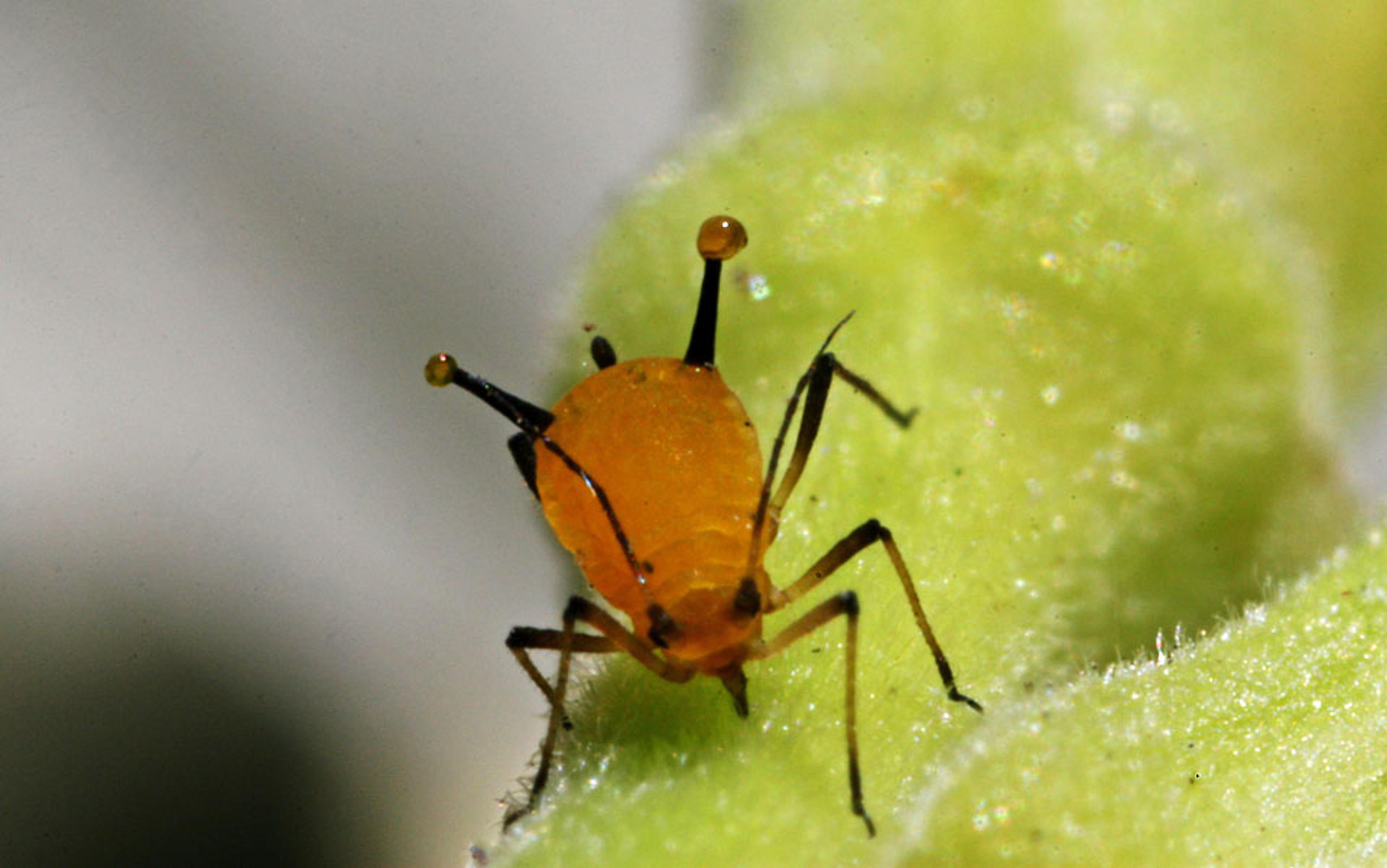
‘More than 270 million years ago, a lone aphid likely attained a carotenoid gene from a fungus’. Photo courtesy Wikipedia
Scientists already knew that pea aphids appear green or red depending on the carotenoids in their bodies, and that aphid populations shift their colours in response to certain threats: green aphids are more susceptible to parasitic wasps; red aphids are more vulnerable to ladybirds. But the origin of the pigments had always been something of a mystery. Aphids primarily feast on sap, which does not contain many carotenoids. And pea aphids were often found with very different carotenoids than the ones inside the plants they were eating. When Moran compared the aphid’s pigment genes with those in many different creatures, the closest match was in a family of fungus. More than 270 million years ago, a lone aphid likely attained a carotenoid gene from a fungus – perhaps one that was infecting it, or one it was munching. Other scientists have since discovered that spider mites and gall midges have also acquired carotenoid genes from fungi and bacteria.
Shake any branch on the tree of life and another astonishing case of interspecies gene transfer will fall at your feet. Bdelloid rotifers – tiny translucent animals that look something like sea slugs – have constructed a whopping eight per cent of their genome using genes from bacteria, fungi and plants. Fish living in icy seawater have traded genes coding for antifreeze proteins. Gargantuan-blossomed rafflesia have exchanged genes with the plants they parasitise. And in Japan, some people’s gut bacteria have stolen seaweed-digesting genes from ocean bacteria lingering on raw seaweed salads.
At this point, the tally is too high to ignore. Scientists can no longer write off gene-swapping among eukaryotes – and between prokaryotes and eukaryotes – as inconsequential. Clearly genes have all kinds of ways of journeying between the kingdoms of life: sometimes in large and sudden leaps; other times in incremental steps over millennia. Granted, many of these voyages are probably futile: a translocated gene finds itself to be utterly useless in its new home, or becomes such a nuisance to its genetic neighbours that it is evicted. Laterally transferred genes can be imps of chaos, gumming up or refashioning a genome in a way that is ultimately disastrous – perhaps even lethal to a species. In a surprising number of instances, however, wayfaring genes make a new life for themselves, becoming successful enough to change the way an organism behaves and steer its evolution.
The fact that horizontal gene transfer happens among eukaryotes does not require a complete overhaul of standard evolutionary theory, but it does compel us to make some important adjustments. According to textbook theories of evolution, the major route of genes moving between organisms is parent to child – whether through sex or asexual cloning – not this sneaky business of escorting genes between unrelated organisms. We must now acknowledge that, even among the most complex organisms, vertical is not the only direction in which genes travel.
Likewise, standard theory says that mutations are supposed to happen within a species’s own genome, not come from somewhere else entirely. We now know that the appearance of new genes does not necessarily result from tweaks to native DNA, but might instead represent the arrival of far-flung visitors. ‘We need to start thinking about genomes as ecological units rather than monolithic units,’ says Jack Werren of the University of Rochester in New York, one of the scientists who discovered the wolbachia/fruit fly Russian doll. ‘We’re dealing with a new category by which unique genes can evolve.’
In some cases, this genetic hopscotching ‘could exert a very powerful evolutionary force’, says Li. ‘It can introduce novelties that cannot be achieved by gradual genetic mutations.’ Consider that a plant acquiring a gene from a bacterium, or an aphid from a fungus, is not receiving some half-constructed genetic prototype. Rather, it gets the benefit of all the aeons of natural selection that have whittled that gene in another creature, honing its power. An introduced gene might need some tweaks before it whirs in sync with its new neighbours, but it could be closer to such harmony than a de novo mutation that was caused by, say, a cell-division error or UV radiation. Horizontal gene transfer opens the possibility of a creature instantaneously acquiring a gene-trait combo that its own genome would have been unlikely to invent by itself.
Laterally transferred genes can sway evolution’s tiller in more subtle ways, too. Certain types of introduced genes duplicate themselves many times over, often leaving behind either little bits and pieces or entire replicas. In the process, they can rearrange large chunks of native DNA, change the way certain genes are expressed, or create whole new genes out of all this shuffling. By making a host genome larger and more diverse, these genetic immigrants increase the probability of copying and editing errors, some of which can be serendipitous and spur rapid evolution, as might have happened with the little brown bat.
We can unite these various corollaries to standard evolutionary dogma by re-imagining the tree of life. In the classic textbook depiction, the tree of life has a single trunk that splits into three big domains – bacteria, archaea (which resemble bacteria but are genetically and molecularly distinct) and eukaryota. These three domains of life branch into all known species. Every creature that ever existed presumably ‘descended from some one primordial form’, as Charles Darwin put it in 1859. And genes ostensibly flow in one direction: up from the trunk.
Scientists such as Ford Doolittle and Carl Woese at the University of Illinois have argued that this portrayal is an oversimplification. Rather than rising from a single trunk, they say, the tree of life stands on an interweaving root system. Rather than evolving from one ‘last universal ancestor’, all life arose from a communal pool of primitive cells with unbridled zeal for exchanging DNA. For relatively simple cells with only a handful of genes each, swapping DNA was an excellent strategy for acquiring and preserving the best adaptations around.
At some point, Woese proposed, cells reached a certain threshold of complexity at which it became detrimental to embrace a bombardment of foreign genes. A primordial cell harbouring a small group of genes can potentially gain a lot by adding new genes to its repertoire; but a more sophisticated cell with hundreds or thousands of genes risks imbalancing an intricate genome fine-tuned by a longer period of natural selection. So, complex eukaryotic cells evolved new ways to protect their DNA and expunge genetic invaders.
However, as has become clear in the past decade, horizontal gene transfer did not halt among eukaryotes and their microbial denizens. A mischievous breeze continued to blow DNA this way and that, from one branch on the tree of life to another. Wolbachia, pea aphids and hornworts all encourage us to accept a truth that seems unsettling at first, but ultimately invites us into greater communion with all life on the planet.
we can no longer pretend that gene-mixing between species is ‘unnatural’, that it is some misguided practice that would never exist if not for our meddling latex-gloved hands
There seems to be a notion in the public consciousness that the DNA of one species should not mix with the DNA of another. This belief becomes especially clear in the ongoing debate about genetically modified organisms (GMOs). Opponents frequently argue that the kind of gene transfers scientists make between different species would never happen outside the lab. Putting a wheat gene into a chestnut tree, or a bacterial gene into corn, or a fish gene into a tomato? Surely that’s unnatural. The ostensible perversion of mixing genes is struck like a gong, again and again. The supermarket chain Whole Foods, for example – which counsels its customers on how to avoid genetically modified foods – defines GMOs as ‘organisms whose genetic make-up (DNA) has been altered in a way that does not occur naturally.’
But it does. Genetic promiscuity is far more prevalent in nature than we realised. This fact alone is not an argument in favour of GMOs; simply because something occurs in nature without assistance from humans does not mean it is inherently good or bad. Confronted with this fact, however, we can no longer pretend that gene-mixing between species is ‘unnatural’, that it is some misguided practice that would never exist if not for our meddling latex-gloved hands. We did not invent gene transfer; DNA did. Genes are concerned with one thing above all else: self-perpetuation. If such preservation requires a particular gene to adapt to a genome it has never encountered before – if riding a parasite from one species to another turns out to be an extremely successful way of guaranteeing perpetuity – so be it. Species barriers might protect the integrity of a genome as a whole, but when an individual gene has a chance to advance itself by breaching those boundaries, it will not hesitate.
That’s the thing about DNA: its true loyalty is to itself. We tend to think of any one species’s genome as belonging to that species. We have a strong sense of ownership over our genes in particular – an understanding that, even though our genome overlaps with that of other creatures, it is still singular, is still ‘the human genome’. So strong is our possessiveness that the mere idea of mixing our DNA with another creature’s – of any two species intermingling genes – immediately repulses us. As far as DNA is concerned, however, the supposed walls between species are not nearly so impermeable. Up in the branches of the great tree of life, we are no longer immersed in the ancient communal pool that watered its tangled roots. Yet we cannot escape the winds of promiscuity. Even today – as was true from the start – ‘our’ genes are not ours alone.
